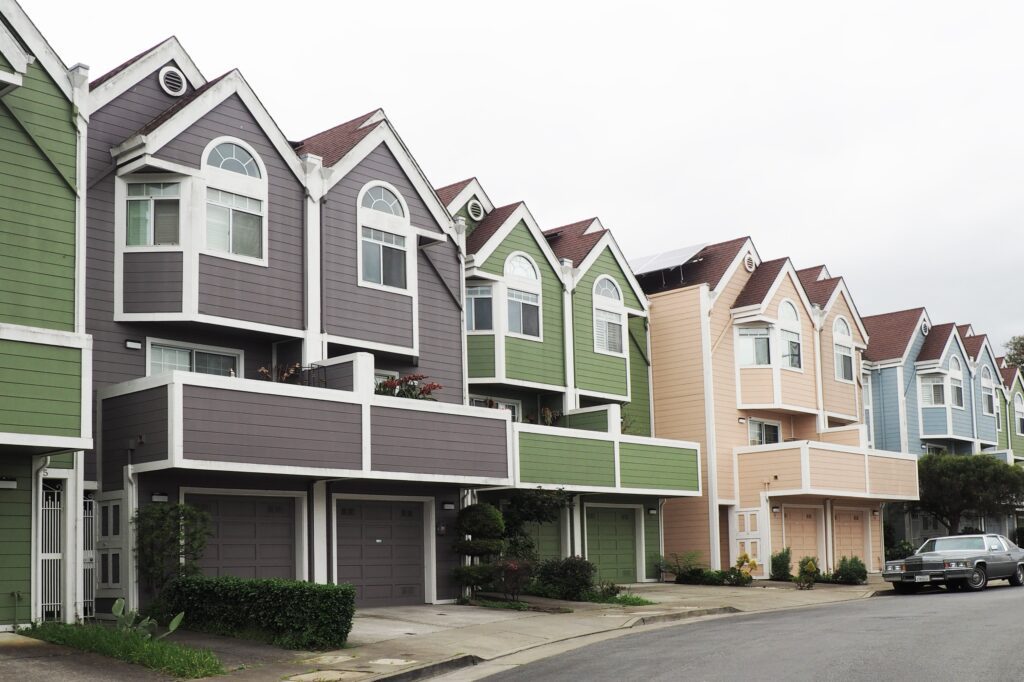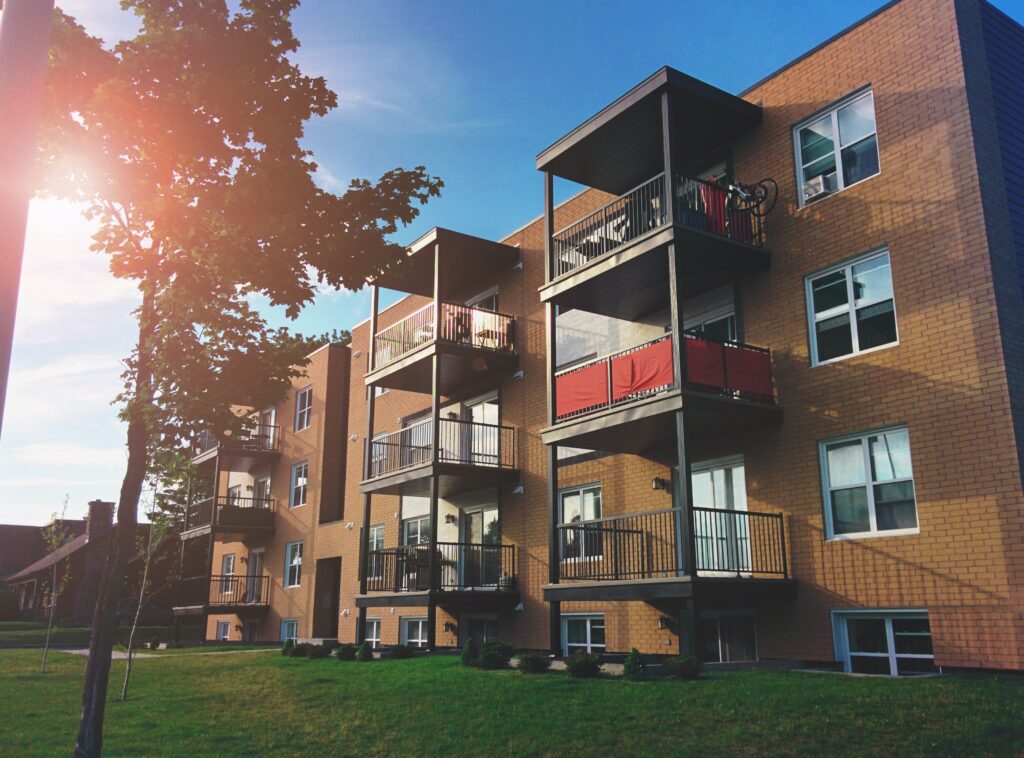I’m here to tell you about an incredible initiative that is making a difference in the world of affordable housing. With the rise of housing costs and the increasing number of individuals struggling to find a place to call home, non-profit organizations have taken on the challenge of creating viable solutions. One such solution is the construction of tiny homes. These pint-sized dwellings are not only affordable, but they also provide a sense of community and much-needed stability for those in need. Join me as we explore the wonderful work being done through tiny home construction for non-profits, and how it is making a lasting impact on the lives of those who need it most.
Why tiny homes for non-profits?



This image is property of images.unsplash.com.
Rising housing costs and homelessness
As the cost of housing continues to soar in many parts of the world, the issue of homelessness has become increasingly prevalent. Non-profit organizations are often at the forefront of addressing this crisis and finding innovative solutions. With limited funding and resources, these organizations face the challenge of providing affordable housing to those in need. Tiny homes have emerged as a promising option in addressing this pressing issue.
Limited funding and resources
Non-profit organizations typically operate on limited budgets, relying heavily on donations and grants to finance their initiatives. Building traditional homes can be prohibitively expensive, making it difficult for these organizations to provide affordable housing options. Tiny homes present a cost-effective alternative that allows non-profits to stretch their limited resources further and provide more housing options for individuals and families in need.
Benefits of tiny homes for non-profits
Tiny homes bring numerous benefits to non-profit organizations involved in affordable housing initiatives. From lower construction and maintenance costs to reduced environmental impact, these smaller dwellings prove to be an ideal solution. Their compact size enables the efficient use of land while offering flexibility and adaptability in design. By understanding the concept of tiny homes, non-profits can harness their potential to address the challenges they face in the realm of affordable housing.
Understanding the concept of tiny homes
Definition and characteristics
Tiny homes, also known as micro homes or compact homes, are dwellings typically ranging from 100 to 400 square feet in size. They are designed to optimize space utilization while still providing the necessary amenities for comfortable living. These homes prioritize functionality and often incorporate innovative storage solutions and multi-purpose furniture. Despite their small footprint, they can offer a sense of coziness and foster a sense of community among residents.
Different types of tiny homes
The concept of tiny homes encompasses a variety of building styles and designs. These range from traditional small houses on foundations to mobile homes on trailers, referred to as tiny houses on wheels (THOWs). Other types include container homes, converted sheds or barns, and even repurposed shipping containers. Each type of tiny home offers unique advantages and considerations, allowing non-profits to choose the most suitable option based on their resources and goals.
Key considerations in design and construction
Designing and constructing tiny homes for non-profit organizations require careful planning and consideration of various factors. Key considerations include optimizing spatial layouts, maximizing natural light, and incorporating energy-efficient features to reduce utility costs. Accessibility is a crucial aspect, ensuring that the homes meet the needs of individuals with disabilities. Additionally, the use of sustainable and durable materials is vital to ensure longevity and minimize maintenance requirements.
Benefits of tiny homes for affordable housing solutions
Lower construction and maintenance costs
One of the significant advantages of tiny homes for non-profits is the lower cost associated with their construction. Due to their smaller size, fewer materials and labor hours are required, resulting in reduced expenses. Additionally, the maintenance costs for tiny homes are considerably lower compared to larger homes, allowing non-profits to allocate their resources more efficiently towards other initiatives and services for residents.
Reduced environmental impact
Tiny homes are inherently sustainable. Their compact size minimizes the ecological footprint, requiring fewer resources for construction and operation. With a smaller living space, energy consumption is lowered, resulting in reduced utility costs and environmental impact. Incorporating energy-efficient features such as solar panels and low-flow fixtures further enhances their sustainability, making tiny homes an eco-friendly choice for non-profit organizations.
Maximizing land use and density
The efficient use of limited land resources is a critical consideration for non-profit organizations seeking to address affordable housing challenges. Tiny homes offer a solution by maximizing land use and density. With smaller footprints, these homes can be clustered together, allowing for more units within a given area. This approach helps non-profits make the most of available land, providing housing options for more individuals and families in need.
Flexibility and adaptability
The design and construction of tiny homes offer flexibility and adaptability to meet the changing needs of residents and communities. These dwellings can be customized to suit specific requirements, allowing non-profits to create housing solutions tailored to the unique needs of different populations. Furthermore, the smaller size of these homes enables easy relocation if necessary, providing opportunities for non-profits to address housing needs in different areas or respond to emergencies.
Challenges in tiny home construction for non-profits
Navigating zoning and building codes
One of the primary challenges non-profit organizations face in constructing tiny homes is navigating zoning and building codes. These regulations can vary significantly between jurisdictions and may not always be conducive to the development of smaller dwellings. Non-profits must carefully research and understand the local regulations to ensure compliance, potentially requiring partnerships with local authorities and advocacy for policy changes to facilitate the construction of tiny homes.



This image is property of images.unsplash.com.
Securing suitable land for development
Access to suitable land presents another obstacle for non-profit organizations engaged in tiny home construction. Affordable, well-located land may be scarce, especially in urban areas where housing demand is high. Non-profits may need to explore partnerships with government entities, private landowners, or other organizations to acquire land for their initiatives. Creative approaches such as repurposing underutilized spaces or collaborating with other community development projects can help secure viable land options.
Community acceptance and opposition
Introducing tiny homes into existing communities may face opposition from some residents who may have concerns about property values, aesthetics, or perceived social issues. Non-profit organizations must engage in extensive community outreach and education to alleviate concerns and build support for their initiatives. By openly communicating the benefits of tiny homes and actively involving community members in the design process, non-profits can foster acceptance and build stronger relationships within the communities they serve.
Limited expertise and resources
Non-profit organizations often operate with limited expertise and resources, which can pose challenges in the construction of tiny homes. These organizations may lack the knowledge and experience required for efficient project management and construction. Partnering with builders, architects, and other professionals with expertise in tiny home construction can help non-profits overcome these challenges by providing guidance and support throughout the process.
Collaborations between non-profits and builders
Engaging local contractors and volunteers
To overcome limited expertise and resources, non-profits can engage local contractors and volunteers in the construction of tiny homes. Local contractors bring professional skills and experience, ensuring that the homes are built to high standards. Additionally, involving volunteers from the community fosters a sense of ownership and strengthens local support for the initiatives. By leveraging the skills and dedication of both professionals and volunteers, non-profits can create a collaborative and cost-effective approach to tiny home construction.
Establishing partnerships with construction companies
Forming partnerships with construction companies can provide non-profit organizations with access to valuable resources, including equipment, materials, and expertise. These partnerships can be structured in various ways, such as through sponsorships, in-kind donations, or service collaborations. Construction companies benefit from the positive publicity and community engagement associated with these initiatives, while non-profits gain an essential ally in their pursuit of affordable housing solutions.
Leveraging government initiatives and funding
Governments at various levels often have initiatives and funding programs to support affordable housing solutions, including tiny homes. Non-profit organizations can tap into these opportunities by navigating the complex landscape of government requirements, grants, and funding options. By aligning their initiatives with government priorities and programs, non-profits can secure additional financial support, allowing them to expand their housing projects and provide more individuals with affordable homes.
Utilizing volunteer labor and skills training
Volunteer labor can significantly contribute to the construction of tiny homes for non-profit organizations. Engaging volunteers from the community not only reduces labor costs but also fosters a sense of community involvement and support. Non-profit organizations can provide skills training to volunteers, enabling them to actively participate in the construction process. This approach empowers individuals and reinforces the spirit of community collaboration, ultimately benefiting both the non-profit and the volunteers involved.
Design considerations for non-profit tiny homes
Optimizing space and functionality
Designing tiny homes necessitates a focus on optimizing space and functionality. Every square foot must be strategically utilized to accommodate essential amenities and storage solutions without sacrificing comfort. Innovative design approaches, such as built-in furniture and multifunctional spaces, can help maximize living areas. Creative utilization of vertical space, such as lofted sleeping areas or wall storage, can also contribute to a sense of spaciousness within the compact design.
Incorporating energy-efficient features
Energy efficiency is a crucial consideration in the design of non-profit tiny homes. Integrating energy-efficient features helps reduce utility costs, making these homes more affordable for residents. This can include energy-efficient appliances, LED lighting, proper insulation, and smart home technology that optimizes energy usage. By incorporating these features into the design, non-profits can create environmentally friendly homes that prioritize sustainability and reduce the long-term financial burden on residents.
Ensuring compliance with accessibility standards
Accessibility is an essential aspect of designing tiny homes for non-profit organizations. These homes must be designed to accommodate individuals with disabilities, ensuring equal access and comfort for occupants with varied mobility needs. Features such as wider doorways, grab bars, and wheelchair-accessible bathrooms are critical aspects that must be incorporated to meet accessibility standards. By prioritizing accessibility, non-profits can create inclusive housing solutions that cater to a diverse range of residents.
Balancing affordability and quality
Achieving a balance between affordability and quality is a key consideration for non-profit organizations in tiny home construction. While cost-effectiveness is crucial, cutting corners on quality can lead to long-term maintenance issues and compromises on comfort and durability. By selecting durable yet cost-effective materials and engaging skilled professionals in the construction process, non-profits can ensure that their tiny homes meet high standards of quality while remaining affordable for residents.
Fundraising and financing for tiny home projects



This image is property of images.unsplash.com.
Developing a comprehensive fundraising strategy
Funding is a critical aspect of any non-profit construction project, and tiny home initiatives are no exception. Non-profit organizations must develop a comprehensive fundraising strategy that includes both short-term and long-term goals. This strategy may involve diversifying funding sources, engaging in community outreach, and organizing fundraising events. By crafting a well-thought-out strategy, non-profits can attract the necessary financial support to bring their tiny home projects to fruition.
Seeking grants and sponsorships
Grants and sponsorships can serve as valuable financial resources for non-profit tiny home initiatives. Non-profit organizations can seek funding from foundations, government entities, and corporate sponsors that align with their mission and goals. Securing grants and sponsorships often involves thorough research, proposal writing, and ongoing relationship management. By actively pursuing these funding opportunities, non-profits can create meaningful partnerships while securing the necessary funds for their tiny home projects.
Crowdfunding and community engagement
Crowdfunding has emerged as an increasingly popular fundraising avenue for non-profit organizations. By leveraging online platforms, non-profits can engage with the broader community and raise funds for their tiny home initiatives. Crowdfunding campaigns provide an opportunity to share the organization’s mission, solicit donations, and build a network of supporters. Non-profits can harness the power of community engagement and social media presence to rally support and generate the financial resources needed for their projects.
Exploring microloan and social impact investment options
Microloans and social impact investments offer alternative financing avenues for non-profit organizations. Microloans provide smaller loans to individuals or organizations that may not qualify for traditional bank loans. Non-profits can leverage microloans to fund construction costs or provide affordable financing for potential residents. Social impact investments involve individuals or organizations providing capital for projects that generate both financial returns and positive social outcomes. By exploring these innovative financing options, non-profits can access the necessary funds to make their tiny home projects a reality.
Addressing legal and regulatory considerations
Navigating permits and inspections
Non-profit organizations must navigate the permit and inspection process associated with tiny home construction. This entails understanding and complying with local building codes, fire safety regulations, and zoning requirements. From obtaining the necessary permits to coordinating inspections, non-profits must ensure that their tiny homes meet all legal requirements. Engaging professionals familiar with the local regulations can help ease the process and ensure compliance with applicable laws.
Meeting safety and health regulations
The safety and health of residents are of paramount importance in non-profit tiny home projects. Non-profits must ensure that their homes meet all safety and health regulations, including proper electrical wiring, fire safety measures, and ventilation requirements. Adherence to these regulations not only protects the residents but also ensures the long-term viability and sustainability of the homes. Regular maintenance, inspections, and ongoing training for residents in safety protocols are additional measures to prioritize well-being.
Complying with local housing ordinances
Local housing ordinances and regulations can have a significant impact on the construction and operation of non-profit tiny homes. These ordinances may address aspects such as minimum square footage requirements, setbacks, and maximum occupancy limits. Non-profit organizations must familiarize themselves with these rules and work within their constraints to ensure compliance. Collaborating with local authorities and seeking their guidance and support can facilitate a smoother process and promote positive relationships.
Ensuring long-term affordability and sustainability
Long-term affordability and sustainability are central considerations for non-profit organizations in the realm of tiny home construction. These homes must remain affordable and accessible to individuals and families in need beyond the initial construction phase. Non-profits can explore various strategies to maintain long-term affordability, such as partnering with support service providers, instituting income verification processes, or implementing community land trusts. By ensuring long-term affordability and sustainability, non-profits can fulfill their mission and provide a stable housing solution for the communities they serve.
Case studies of successful non-profit tiny home initiatives
XYZ Community Housing Initiative
The XYZ Community Housing Initiative is a non-profit organization that successfully implemented a tiny home project in an underserved community. Through partnerships with local contractors and community volunteers, XYZ Community Housing Initiative constructed a cluster of tiny homes on a donated parcel of land. By leveraging government funding and grants, they were able to provide affordable housing options to individuals with low incomes. The initiative received widespread community support, leading to increased acceptance and a positive impact on the local neighborhood.
ABC Homebuilders Collective
The ABC Homebuilders Collective is a collaborative effort between multiple non-profit organizations and construction companies. By pooling their resources and expertise, they embarked on a large-scale tiny home project aimed at addressing homelessness in their community. With financial backing from local foundations and crowdfunding campaigns, the collective constructed a village of tiny homes, providing stable housing and supportive services to individuals experiencing homelessness. The collaboration between the non-profits and builders proved to be a successful model, combining their respective strengths and achieving significant positive outcomes.
PQR Tiny Homes for Veterans
The PQR Tiny Homes for Veterans initiative focused on providing affordable housing solutions specifically for veterans facing homelessness. With the support of local businesses and government grants, the non-profit organization implemented a tailored tiny home program to meet the unique needs of these individuals. The tiny homes were designed with accessibility features and offered wrap-around services to support veterans’ transition into stable housing. The initiative demonstrated the effectiveness of targeting specific populations and tailoring tiny home initiatives to their specific needs.
Lessons learned and best practices
Creating strong partnerships and networks
Collaboration is key in the successful implementation of non-profit tiny home initiatives. Building strong partnerships with local contractors, construction companies, government entities, and community organizations ensures access to necessary resources and expertise. By actively fostering relationships and networks, non-profit organizations can leverage the collective power of these partnerships to overcome challenges and create more significant impacts in the realm of affordable housing.
Prioritizing resident empowerment and support
Non-profit organizations must prioritize resident empowerment and support throughout the process of tiny home construction and beyond. Engaging residents in the design process, providing access to support services, and promoting community engagement are essential components of successful initiatives. By empowering residents to take an active role in their housing journey, non-profits foster a sense of ownership and pride, leading to stronger, more resilient communities.
Continual monitoring and evaluation
Continual monitoring and evaluation are critical for non-profit organizations engaged in tiny home projects. Regular assessments help identify areas for improvement, refine processes, and measure the impact of these initiatives. By collecting data, soliciting feedback from residents, and collaborating with external evaluators, non-profits can ensure that their tiny home initiatives continue to meet the evolving needs of the community and deliver positive outcomes.
Advocating for policy changes and public support
Non-profit organizations play a crucial role in advocating for policy changes and garnering public support for their affordable housing projects. By actively engaging with local authorities, elected officials, and the community, non-profits can influence policies that support the development of tiny homes and address the underlying causes of homelessness. Public education and awareness campaigns can help dispel misconceptions surrounding affordable housing and generate a supportive environment for non-profit initiatives.
In conclusion, tiny homes present an appealing and innovative solution for non-profit organizations addressing the affordable housing crisis. By understanding the concepts, benefits, and challenges associated with tiny home construction, non-profits can navigate the complexities and create successful affordable housing initiatives. Through collaborations, thoughtful design, strategic fundraising, and adherence to legal requirements, non-profit organizations can empower individuals, create sustainable communities, and advocate for lasting change in the realm of affordable housing.
